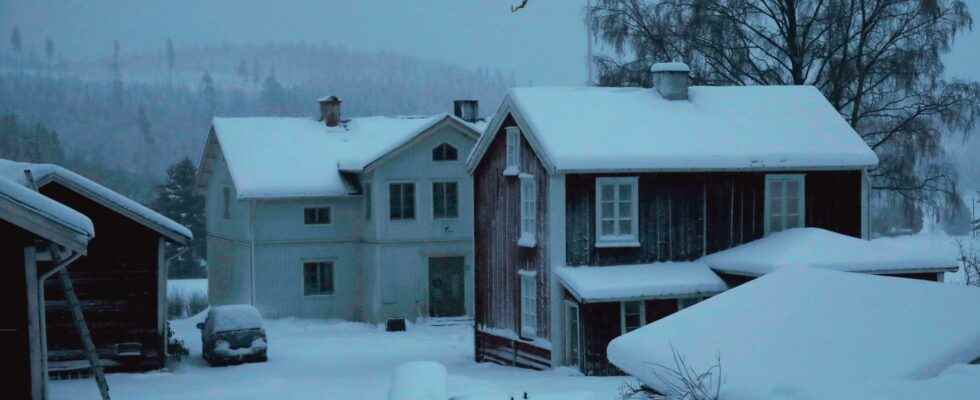Published: Just now
full screen
Next
Households in southern Sweden risk being disconnected from the electricity grid if there is a power shortage this winter. Archive image.
1 of 2 Photo: Mats Andersson/TT
That households are temporarily disconnected from the electricity grid due to a lack of power has never before happened in Sweden. This winter there is now a tangible risk of such a scenario – but it can be avoided.
– We need to come to the understanding that even small sacrifices will have a big effect, says Anders Wallinder at the Energy Agency.
During the upcoming winter, according to Svenska kraftnät, there is a real risk that one will be forced to carry out planned disconnections from the electricity grid. The reason is a so-called lack of effect.
Usually, Sweden can rely on importing electricity during the days when domestic electricity production is not sufficient. But in a situation where Europe can no longer rely on Russian gas, that opportunity is diminishing – something that could lead to having to stay on electricity during the coldest days of the year.
– How much you need to disconnect depends on how big the deficit is, says Erik Ek, operations manager at Svenska kraftnät.
A so-called manual consumption disconnection has never before had to be done in Sweden. But in such a scenario, there has been a classification list for society’s electricity users since 2011, which each county board is responsible for producing.
– There are a number of different priorities according to a list that must be followed, which is about whether it is a socially important activity that needs to be saved. These include hospitals and homes for the elderly, says Anders Wallinder, head of the department for safe energy supply at the Energy Agency.
Take turns being powerless
In the event of a disconnection, it is households in southern Sweden, where the electricity shortage is greatest, that will be affected. According to Svenska kraftnät, it could be a hundred thousand households that have their electricity cut off for a few hours. Should a long-term disconnection be required, areas can take turns to be without power.
– Housing will go up in smoke first. You can probably expect that most things will be switched off in an area except for the most important points, in order to maintain grid stability, says Anders Wallinder.
During a planned power outage, the same recommendations apply as during a normal power outage in winter.
– It’s about simple things, wear warm clothes, if it’s going to be long, gather the family or those you live with in the same room and warm it, if you’re alone you can build a hut under a table with blankets over it and sleep there, insulate windows and doors, says Anders Wallinder.
At the Swedish Agency for Community Safety and Preparedness (MSB), it is also recommended to update your contact network.
– Find out if you know someone who lives in an area where there is no power cut at the time. Then you can coordinate to be with each other if it’s cold and use each other if necessary, says Elin Bohman, press secretary at the authority.
Reduced electricity use gives effect
But hour-long power outages can be avoided. Calculations from Svenska kraftnät show that a two percent reduction in electricity consumption during the morning and evening peak, when the most electricity is used, reduces the risk of disconnection by five times.
– There are many who live in the country. If everyone is involved and contributes on these occasions, it will work, says Erik Ek.
In several EU countries, measures have been taken specifically to save energy, such as in Finland where a government campaign encourages people to baste less, or in France and Germany where bathhouses are closed and monuments are extinguished.
Anders Wallinder would have liked to see that the conversation in Sweden was also more about what we can do to reduce electricity use.
– If we were to reduce electricity consumption at EU level by five percent, we would not have these problems at all. It’s about such small margins, the smallest thing can help a lot, says Anders Wallinder.
– If you can get more private individuals and companies to think along these lines, to not only improve energy efficiency but also save energy, then we have come a long way.
Facts
This is how you prepare for a longer heating interruption
1. Prepare an “emergency room”.
Choose a room where you can maintain the temperature. Protect the room from drafts by sealing windows and doors and hanging blankets in front of the windows. Lay carpets on the floors for extra insulation. Don’t forget to aerate from time to time.
2. Tent indoors.
A tent in the emergency room provides extra warmth during the night. If you don’t have a tent, you can build a hut with chairs, sofa and table.
3. Dress warmly.
Dress with several layers of clothing. Use slippers or something else warm on your feet.
4. Cook food simply.
Use an alcohol stove or a gas stove to cook. Eat canned goods and other easily heated foods. You can store the food outdoors.
5. Have spare lights at home.
Use candles and flashlights as light sources. Please keep a stock of candles, tealights, matches and batteries at home.
6. Store water.
Prepare by filling up water in bottles or cans. The water supply works shortly after a power outage, even without backup power.
Source: The Swedish Energy Agency
Read more
